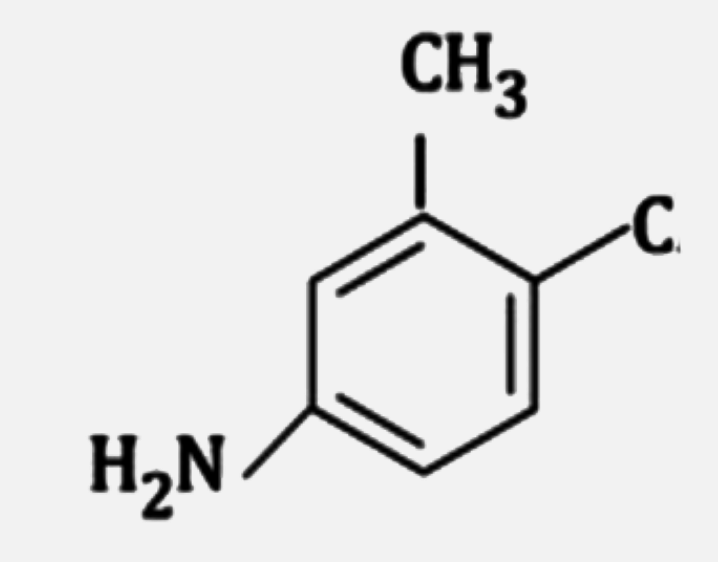C2H5OHX−−→C2H5Cl
X can be except :
SOCl2
PCl3
PCl5
NaCl
The correct Answer is:D
To solve the question, we need to identify which reagents (X) can convert ethanol (C₂H₅OH) into ethyl chloride (C₂H₅Cl) and which cannot.
1. Identify the Reaction: We are looking for a reagent (X) that can convert ethanol (C₂H₅OH) into ethyl chloride (C₂H₅Cl).
2. Consider the First Reagent: SOCl₂ (Thionyl Chloride):
- Reaction:
C₂H₅OH+SOCl₂→C₂H₅Cl+SO₂+HCl
- This reaction produces ethyl chloride along with sulfur dioxide and hydrogen chloride. Therefore, SOCl₂ can be used.
3. Consider the Second Reagent: PCl₃ (Phosphorus Trichloride):
- Reaction:
C₂H₅OH+PCl₃→C₂H₅Cl+H₃PO₃
- This reaction also produces ethyl chloride and phosphorous acid. Hence, PCl₃ can be used.
4. Consider the Third Reagent: PCl₅ (Phosphorus Pentachloride):
- Reaction:
C₂H₅OH+PCl₅→C₂H₅Cl+POCl₃+HCl
- This reaction results in the formation of ethyl chloride, along with phosphorous oxychloride and hydrogen chloride. Thus, PCl₅ can also be used.
5. Consider the Fourth Reagent: NaCl (Sodium Chloride):
- Reaction:
C₂H₅OH+NaCl→C₂H₅ONa+HCl
- In this case, the reaction produces an alkoxide ion (C₂H₅ONa) and does not yield ethyl chloride. Therefore, NaCl cannot be used.
6. Conclusion: The reagent (X) that cannot convert ethanol to ethyl chloride is NaCl.
Final Answer:
X cannot be NaCl.
- Reaction:
C₂H₅OH+SOCl₂→C₂H₅Cl+SO₂+HCl
- This reaction produces ethyl chloride along with sulfur dioxide and hydrogen chloride. Therefore, SOCl₂ can be used.
- Reaction:
C₂H₅OH+PCl₃→C₂H₅Cl+H₃PO₃
- This reaction also produces ethyl chloride and phosphorous acid. Hence, PCl₃ can be used.
- Reaction:
C₂H₅OH+PCl₅→C₂H₅Cl+POCl₃+HCl
- This reaction results in the formation of ethyl chloride, along with phosphorous oxychloride and hydrogen chloride. Thus, PCl₅ can also be used.
- Reaction:
C₂H₅OH+NaCl→C₂H₅ONa+HCl
- In this case, the reaction produces an alkoxide ion (C₂H₅ONa) and does not yield ethyl chloride. Therefore, NaCl cannot be used.
X cannot be NaCl.
Topper's Solved these Questions
- BOOK - RESONANCE ENGLISHCHAPTER - FUNDAMENTAL CONCEPTEXERCISE - Inorganic chemistry (Chemistry Bonding)6videos
FUNDAMENTAL CONCEPT
- BOOK - RESONANCE ENGLISHCHAPTER - EQUIVALENT CONCEPT & TITRATIONSEXERCISE - Part -IV22videos
EQUIVALENT CONCEPT & TITRATIONS
- BOOK - RESONANCE ENGLISHCHAPTER - GASEOUS STATEEXERCISE - Exercise-31videos
GASEOUS STATE
Similar Questions
Knowledge Check
- Question 1 - Select One
In reaction C2H5OH+HxZnX2−−→C2H5X+H2O the order of reactivity of HX is :
AHCl>HBr>HIBHI>HBr>HClCHBr>HCl>HIDHI>HCl>HBr - Question 2 - Select One
In reaction C2H5OH+HXZnX2−−→C2H5X+H2O the order of reactivity of HX is :
AHBr>HI>HClBHI>HCl>HBrCHCl>HBr>HIDHI>HBr>HCl
C6H5−CH=CHCHO(X)−−→C6H5=CHCH2OH
In the above sequence (X) can be:View SolutionIdentify 'M' in the following sequence of reactions
C8H6Cl2O(M)NH3−−→C8H8ClNOBr2−−−→NaOH View Solution
View SolutionList-IList-II(P)R−X+R−ONa→R−O−R(1)Conant-Finkelstein reaction(Q)R−Cl+Kl→Rl(2)Williamsons synthesis(R)R−OHSOCl2−−−→R−Cl(3)Wurtz-Fittig reaction(S)C6H5−X+R−XNa−−→C6H5−R(4)Darzen's reaction
View SolutionC2H5O−O∣∣C−OC2H52MeMgBr−−−−−→(A). The product (A) formed can:
View SolutionWrite the intermediate steps for each of the following reactions
(i)C6H5CH(OH)≡H3O+−−−→C6H5CH≡CHCHO
(ii) View Solution
View SolutionThe fomation of polyethylene from calcium carbide takes place as follows:
CaC2+2H2O→Ca(OH2)+C2H2
C2H2+H2→C2H4

The amount of polyethylene obtained form64kg ofCaC2View Solution

